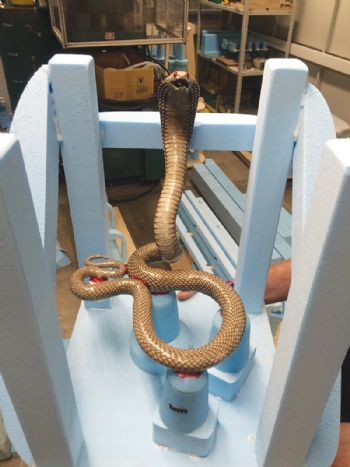
Castings Technology International (
castings-technology.com) — based on the Advanced Manufacturing Park near Sheffield — has overcome a series of challenges to help a British artist produce a sculpture with metal from a meteorite.
London-based Alexander de Cadenet says: “The metal has great significance and gives a perspective on life. It’s a profound material, but it has properties that make it difficult to cast. I approached a number of foundries, but the only people able and willing to take up the challenge were at CTI.”
CTI’s Will Jelfs says: “The metal is about 6% nickel, the balance being iron. The carbon content is low, but the sulphur content is very high, which lowers the melting point and makes the molten metal very difficult to pour, because it is reacting all the time.
“Alex was very keen for us not to alter the composition of the metal, so we had to design a special de-oxidisation process and dribble liquid argon to create a protective bath of inert gas. The sulphur can also make the metal brittle and difficult to work with, so we had to take measures to overcome that, while retaining the fine detail.”
CTI combined the lost-wax process and its own Replicast technology to make the ceramic mould into which the molten metal was to be poured. CTI’s Jim Collins says: “Alex normally supplies a wax pattern for the sculpture, and we designed the delivery and feeding system, which we machine from poly-styrene.”
Mr de Cadenet asked CTI to use a snake (preserved by a taxidermist) as the pattern for the shell, to create a physical link between the animal and the sculpture.
“We created the snake assembly, put ceramic around it and then put it in a furnace to fire the mould and create the cavity for the metal. It came out very well, and the resulting casting retained the snake’s features and pose.”